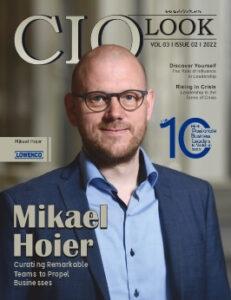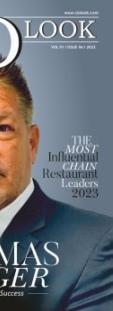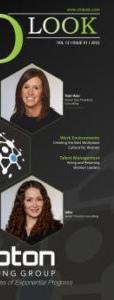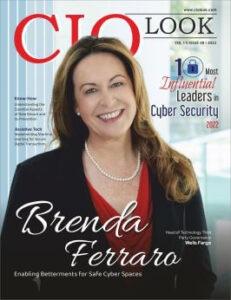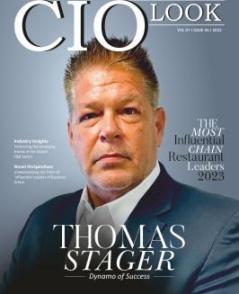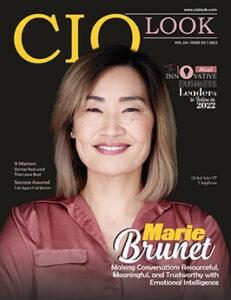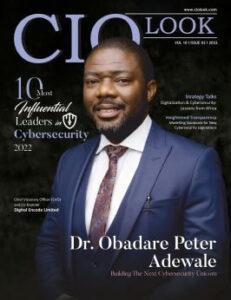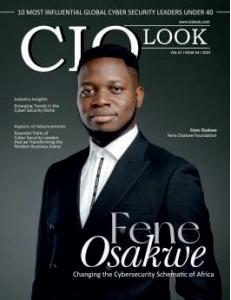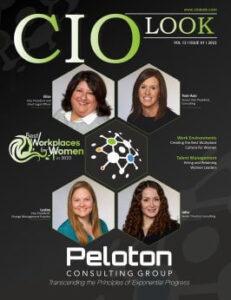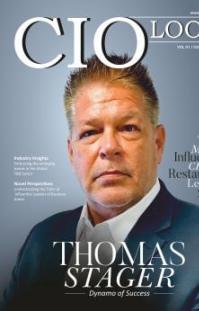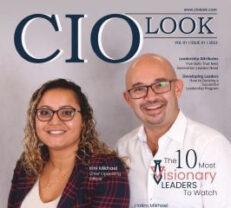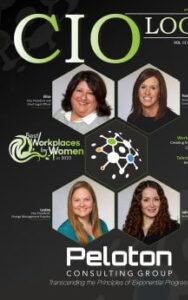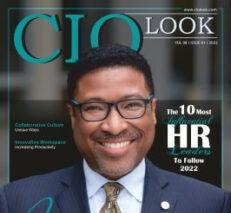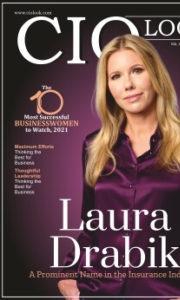










Inthecontemporarylandscapecharacterizedby
acceleratedtechnologicalevolutionandglobal integration,educationalprofessionalsnowassume responsibilitiesthattranscendconventionalinstructional boundaries.Thesepractitionersleveragedigital ecosystemstoexpandeducationalaccesswhiledeveloping cross-disciplinaryframeworksdesignedtoequiplearners withcompetenciesessentialfornavigatinganincreasingly sophisticatedprofessionalenvironment.Throughthese strategicapproaches,educationspecialistsare fundamentallytransformingpedagogicalmethodologies andinstitutionalstructures.CIOLookinitsrecentedition titledTheArchitectofLearningfeaturesthe contributionsofRichardCharlesLarsontoORwhich hastransformedpublicservicesystems,particularlyin urbanplanningandemergencyresponse,using mathematicalmodeling,simulation,andoptimizationto enhancedecision-makingandoperationalefficiency
EquallygroundbreakingareLarson’sinnovationsin education.AsDirectorofMIT’sCenterforAdvanced

EducationalServices,hepioneeredtechnology-enabled learning,leadingtothecreationoftheLearning InternationalNetworksConsortium(LINC)andMIT BLOSSOMS.Theseinitiativesdeliverhigh-quality, interactiveSTEMcontenttounderservedglobal communities,democratizingaccesstoeducation.Larson’s philosophyemphasizescriticalthinking,model-based reasoning,andequity,challengingconventionalpassive learningparadigms.
Hisintegrationofanalyticalrigorwithempathetic teachinghasnotonlyinfluencedpolicyandacademiabut alsoempoweredagenerationofstudentsandeducators worldwide.Larson’slegacyisoneofbridgingscienceand service,usingtechnologyandsystemsthinkingtosolve complexchallengesandfosterinclusive,lifelonglearning.
Haveagreatreadahead!
A Visionary in Operations Research and Education Technology
28
Breaking New Ground
How to Use Technology for Educa�onal Innova�on?
From Concept to Completion
How to Implement Digital Learning Transforma�on?


C O N T E N T S
PoojaMBansal Editor-in-Chief
CONTENT
Deputy Editor Anish Miller
Managing Editor Prince Bolton
DESIGN
Visualizer Dave Bates
Art & Design Director Davis Mar�n
Associate Designer Jameson Carl
SALES
Senior Sales Manager Wilson T., Hunter D.
Customer Success Manager Collins J.
Sales Execu�ves Tim, Smith
TECHNICAL
Technical Head Peter Hayden
Technical Consultant Victor Collins May,
SME-SMO
Research Analyst Eric Smith
SEO Execu�ve Alen Spencer

FOLLOWUSON www facebook.com/ciolook www.twi�er.com/ciolook

WE ARE ALSO AVAILABLE ON
Email info@ciolook com For Subscrip�on www.ciolook.com CONTACTUSON
Copyright © 2025 CIOLOOK, All rights reserved. The content and images used in this magazine should not be reproduced or transmi�ed in any form or by any means, electronic, mechanical, photocopying, recording or otherwise, without prior permission from CIOLOOK. Reprint rights remain solely with CIOLOOK.


“Often, the psychology of queueing is more important than the statistics of the wait itself.”
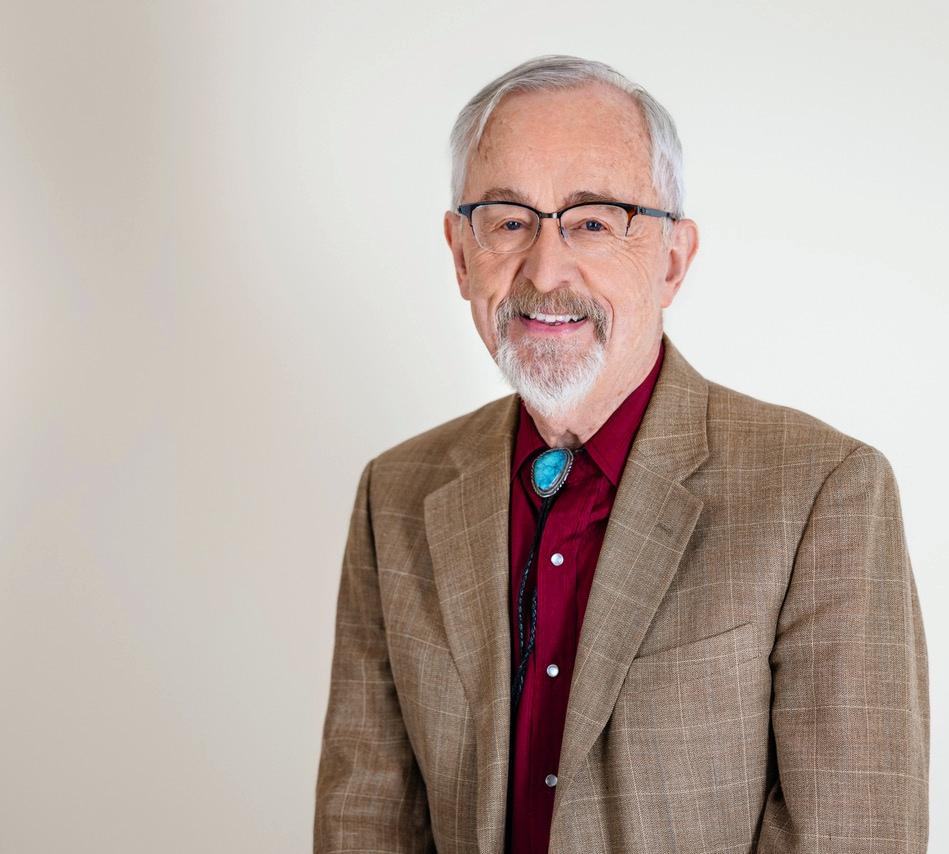





Beforedelvingintotheillustriouscareerof ProfessorRichardC.Larson,oneneedstobe familiarwiththedomainswherehehasmadehis mostlastingimpact: operations research and education technology
Operationsresearch(OR)isanapplicationofadvanced analyticalmethods—suchasmathematicalmodeling, statistics,simulation,andoptimization—tohelp organizationsmakebetterdecisionsandsolvedifficult problems.Fromitsoriginsinmilitaryapplicationsduring WorldWarII,ORhasevolvedtobecomeaubiquitous toolacrossindustriesrangingfromlogisticsand manufacturingtohealthcare,publicpolicy,andurban planning.Itscentralroleistomaximizeefficiencyand effectiveness,whetherbyreducingcosts,improving servicedelivery,oreliminatingwastageofresources. Theimpactofthedisciplinehaswidenedwith advancesincomputinganddataanalysis,enabling practitionerstodealwithincreasinglycomplex problemsinthepublicandprivatesectors. Educationtechnology(EdTech),incontrast,has transformedhowinformationisdeliveredand consumed.
TheinternationalEdTechmarket,valuedinexcess of$163billionin2024,isrisingataquickpaceas schoolsandstudentstakeupdigitallearning platforms,customizedlearning,andimmersive technologysuchasvirtualandaugmentedreality EdTechallowseducatorstoservemorestudents, enableslifelonglearning,andleveragesthepowerof dataanalyticstoenhancestudentoutcomes. Developmentsinthisfieldarenotonly revolutionizingK-12andhighereducationbutare alsorevolutionizingworkforcedevelopmentand corporatetrainingandbridginggapsinaccessand qualityaroundtheworld.Inthesedynamic,evolving contexts,RichardC.Larsonhasbeenatrailblazer, bridgingthechasmbetweenanalyticalrigorand educationalinnovation.
RichardCharlesLarson,tomostofwhomhewasfamiliarly knownas"Dick"Larson,wasbornin1943inBayside, Queens,NewYorkCity
Hischildhoodwasmarkedbyasuccessionof moves—initiallytoSunbury,Pennsylvania,andthenNorth Plainfield,NewJerseyandthentoNeedham,Massachusetts —experienceperhapsthatimbuedhisresourcefulnessand curiosity
AftercompletinghissecondaryeducationatNeedhamHigh School,Larsonpursuedhisadvancedstudiesatthe MassachusettsInstituteofTechnology(MIT)and completedhisBachelorofSciencein1965,Masterof Sciencein1967,andPh.D.in1969,allinelectrical engineering.HisPhDdissertation,"Models for the Allocation of Urban Police Patrol Forces,"wasthe beginningofalifetimeofcommitmenttoapplying scientificprinciplestoproblem-solving,inthiscase,urban systemsandpublicservices.
Larsonbeganworkinginthelate1960swithseminalwork onemergencyservicesincities.Incollaborationwiththe RANDCorporation,heexaminedthedeploymentand dispatchofpoliceandemergencyservicesinNewYork City.Hisresearchproducedseminalpapersandestablished himasthepreeminentanalystoftheefficiencyand effectivenessofurbanservicesystems.
Hisscholarshipwasnotmerelytheoretical;itactually impactedpublicpolicyandpracticeoperations.Larson's modelsimprovedtheallocationofresources,allowingcities toofferquicker,moreresponsiveemergencyservice—a testamenttooperationsresearch'sutilityinpublicservice.
“Technology can be a powerful equalizer, bringing world-class learning to students wherever they are.”
Larson'sleadershipandexpertisehavebeenwidely recognizedbytheprofessionalcommunity.Heservedas PresidentoftheOperationsResearchSocietyofAmerica (ORSA)in1993-1994andin2005,followingitsmerger withTIMS(TheInstituteforManagementScience),the InstituteForOperationsResearchandtheManagement Sciences(INFORMS)wascreated.Larsonwasnameda foundingfellowofINFORMSin2002,anindicationofhis positionwithintheprofession. HewaselectedPresidentof INFORMSin2005.
HisinductiontotheNationalAcademyofEngineeringin 1993wasatriumphantclimax,honoringhis"Development and Application of Operations Research Methods for Public and Private Sector Service Industries."Thisaccolade placedhimalongsidetheUnitedStates'topengineersand scientists.
TheScienceandPsychologyofWaiting:"Doctor Queue”
Tothebroaderpublic,Larsonisperhapsbestknownas "Doctor Queue."Hisexpertiseonqueu ingtheory—the e mathematicalexaminationofwaitinglines—hasbranded himasthego-toguyforcommentaryaboutwaiting psychology,fromsupermarketcheckoutstosecurity checkpointsattheairport.Hehasbeenbroadcaston NationalPublicRadioandprintedintheWashingtonPost, detailinghowsmallchangesinservicedesigncanhave significantimpactsonsatisfactionamongcustomers.
Larsonhasbeenfamouslyquotedassaying,"Often, the psychology of queuing is more important than the statistics of the wait itself."Thisobservationreflectshisspecialtalent forinterweavingtoughanalysiswithsensitivitytohuman psychology,makinghisworkbothrelevantand comprehensible.
In1995,Larsonsteppedintothenextphaseof careerbytakingupanewroleasDirectorof MIT'sCenterforAdvancedEducational Services.Hewasthereanadvocatefor technologyapplicationtoprovidegreater accesstoeducation,andheledprojectssuch astheSingapore-MITAllianceforResearch andTechnology.Hismissionwasclear:
"Technology can be a powerful equalizer, bringing worldclass learning to students wherever they are.”
Larson'sEdTechworkalsoinvolvedfoundingtheMIT BLOSSOMSinitiative,anorganizationthatcreatesand distributesvideotutorialsinmathandsciencetoyoung peopleglobally AsPrincipalInvestigator,Larsonhas directedeffortsindevelopingengaging,interactivemedia thatenablesteachersandinspireslearners,especiallyin disadvantagedcommunities.
HealsoestablishedtheLearningInternationalNetworks Coalition,aprofessionalassociationdedicatedtotheuseof technologytodeliverscalable,high-qualityeducation. Larson'seffortsplacehimattheforefrontofamovementto democratizelearning,leveragingdigitaltechnologiesto overcomegeographyandresources.
ResearchContributionsand Publications
RichardLarson's productivityasa researcherishigh.

“We must continuously reorganize our educational institutions to meet the demands of a continuously changing world.”


“My pedagogy is focused on the process of learning rather than just reaching the correct answer.”
Hehasauthored,co-authored,oreditedsixbooksandmore than175scientificarticles.Hisworkstouchonavarietyof topics,including:
Ÿ Urbanservicesystemsandlogistics
Ÿ Disasterplanningandpandemicresponse
Ÿ Queueingtheoryandthepsychologyofwaiting
Ÿ Smart-energyhomesandsustainableurban infrastructure
Ÿ Workforceplanningandoptimization
Ÿ Technology-enablededucationandonlinelearning platforms
Hisworkismarkedbyscholarlyrigoranddevotionto practicalapplications.Larson'sframeworksandmodels havebeenappliedbycities,corporations,andschools aroundtheglobe.
Larson'sinfluenceextendsbeyondhisresearchand administrativework.AsaprofessoratMIT,hehas mentorednumerousdoctoralstudents,includingKentW ColtonandMaiaMajumder,whohavehadsuccessful careersintheirownright.Hisinstructionismarkedby clarity,enthusiasm,andgenuineconcernforthesuccessof hisstudents.
Hehasalsoservedasaconsultanttocompaniessuchasthe U.S.PostalServiceandtheCityofNewYork,applying academicconceptsandtranslatingthemintoreal-world solutions.Hisleadershipinprofessionalsocietieshas shapedthecourseofoperationsresearchanddevelopeda dynamic,cooperativecommunity.
RichardLarson'slifeisbasedonaloveofservice, education,andinnovation.MarryingMaryElizabeth Murray(“Liz”)in1979,hehasledalifeofdouble commitmenttoademandingcareerandfamilywhilestill holdingontovaluesoftenacityandcuriosity.Hispeersand studentsdescribehimasbeingapproachable,happytogive freelyoftime,anddedicatedtomakingadifference.
ThecontributionsofRichardC.Larsonaremultifaceted.As anacademic,hehasexpandedthefrontierofoperations researchandurbansystems.Asaninstructorandbusiness leader,hehasembracedtechnologytoenlargeaccessto knowledgeandimproveoutcomesforstudents.Asaleader, hehaschartedthepathforprofessionalorganizationsand guidedscoresofcolleaguesandstudents.
Hiswritingremainshighlyapplicableinanerawhencities arefacedwithcomplexchallenges,andeducationsystems mustadapttonewtechnologiesandglobalforces.Larson's professionallifeisatestamenttothepowerof interdisciplinarythoughtandthenecessityofconnecting theoryandpractice.
RichardC.Larsonisagiantinoperationsresearchand educationtechnology.Hispioneeringscholarshiphas transformedurbanservicesystemsandemergency response.HisEdTechinnovationhasopenedupnew possibilitiesforstudentsworldwide.Throughhis scholarship,mentoring,andvision,Larsonhas demonstratedtotheworldhowanalyticintensityand technologycanbeusedtosolvetough,real-world challengesandenhancehumanwelfare.
Andaseducationtechnologyandoperationsresearch continuetoevolve,Larson'slegacyendures—remindingus thatthedeepestbreakthroughshappenattheintersectionof science,service,andimagination.Hislifeisaninspiration toeachofuswhoseektomakealastingimpactthrough knowledge,imagination,andcommitmenttothegreater good.
RichardLarsonhasbeenacentralforceindriving technology-enablededucationforward,usinghisoperations researchandsystemsengineeringexpertisetodesign scalable,effectiveeducationalinnovations.
Larson'seducationaltechnologycareerstartedintheearly 1990sasaresultofobservingthepositiveinfluenceof technologyonhisownchildren'slearningprocess. Seeingitspotentialtotransform,hebecameoneofthe leadingproponentsofinjectingdigitaltoolsintothe classroom.
From1995through2003,heledMIT'sCenterfor AdvancedEducationalServices(CAES),which concentratedontakingMIT'seducationalreachbeyondthe boundariesofthecampus.
Duringhistenure,CAESdesignedanddelivered technology-poweredlearningsolutionsforstudents globally,includingthoseresidingandworkingfarfrom campus—oftenonothercontinents. In2002,Larson establishedtheLearningInternationalNetworks Consortium(LINC),aMassachusettsInstituteof Technology(MIT)-basedglobalprojectaimedatusing technologytoprovidehigh-qualityeducationatscale.LINC hasorganizedinternationalsymposiaanddeveloped partnershipsamonguniversities,policymakers,and practitionersfrommorethan25nations.Themissionofthe consortiumistomeettheeducationalrequirementsof disadvantagedandremoteyouththroughe-learning, distanceeducation,andotherICTs.
Larson'svisionforLINCwasalsoevident:"To help meet the educational needs of the growing population of youths in developing countries through e-learning, distance education and other technologies.”
Larson'smostsignificantimpactislikelyasPrincipal InvestigatoroftheMITBLOSSOMS(BlendedLearning OpenSourceScienceOrMathStudies)Initiative.Larson wasinspiredtocreateBLOSSOMSaftervisitingaschool inruralChina,wherehesawtheconfinesandpossibilities oftapedlectures.Larsonandco-founderElizabethMurray dreamedofinteractivevideolessonsthatwouldinspire studentsandenableteachers,notmerelytransmit information.BLOSSOMScreatesfree,interactivemathand sciencevideomodulesthatsupportstandardcurricula.They featureteachersfromallovertheglobeandareintegrated withactivitiesoflocalclassroominstructors,makingthem ahybridsystemofglobalyetlocallycontextuallearning. BLOSSOMShasprovidedequalaccesstoqualitySTEM educationforstudentsinmanydifferentcontexts, particularlyinlessdevelopednations,andhasestablished itselfasanopeneducationalresourcesmodel.
Larson'sworkhashadanimpactoneducationpolicyand practiceworldwide.ThroughLINCandBLOSSOMS,he hasadvocatedfortechnologytofillgapsineducation, createinternationalcooperation,andenablelifelong learning.Hisleadershiphasencouragedteacherstouse blendedanddistancemodelsofeducation,openingup educationtobemoreinclusiveandresponsivetovarious communities.
AsLarsonhasnoted,"Technology can be a powerful equalizer, bringing world-class learning to students wherever they are."Hiseffortsinthisfieldhaveprovedthat digitaltools,whenwelldesignedandputintouse,may democratizequalityeducationandempowerteachersand learnersalike.
RichardLarson'simpactontechnology-facilitatedlearning issignificantandlasting.Bypromotingnewmodelssuchas LINCandBLOSSOMS,hehasincreasedaccesstohighqualityinstruction,especiallyfortraditionallyunderserved groups.Hisvision,leadership,andpracticalsolutions continuetoinformthefutureofeducationworldwide, makingtechnologyaninstrumentofconnection—not obstruction—toopportunity
RichardLarsonhaspresentedanumberofspecific technologiesandtechnologicalstrategiestoeducation,with themainfocusbeingonhowtousevideo,distance learning,andblendedlearningmodelstoincreaseaccess andenhanceeducationalqualityworldwide.
Larsonwasthefirsttocreateinteractivevideo-based educationalmaterial.Oneexampleisthe"Pivot Physics Interactive Video Tutor,"whichemployedmultiplecamera viewsandsegmentedvideolecturesalongwithsearchable homeworksolutions.Thisearlyinnovationenabledstudents tointeractwithphysicsmaterialinamodular,interactive fashion,intendedtobecombinedwithliveclassroom instruction.Thiswasaforward-thinkingapproachandset thestageforsubsequentefforts.
AsPrincipalInvestigatoroftheMITBLOSSOMSproject (BlendedLearningOpenSourceScienceOrMathStudies), Larsoninitiatedamodelthatinterweavesvideolessons withteacher-ledinteractiveexercises.Theblendedmodel pairsthescalabilityofrecordedmaterialwiththe engagementandculturalcontextdeliveredbylocal instructors.BLOSSOMSlessonsareopensourceand intendedtoaugmentmathandscienceeducationglobally, particularlyinunderservedareas.



WhileservingasDirectorofMIT'sCenterforAdvanced EducationalServices(CAES)from1995through2003, Larsonpushedtheapplicationoflive,interactivedistance learningtechnology.HebroughtMITclassroomsuptodate sothatsynchronousteachingcouldbeofferedtodistant students,includingcross-continentandcross-timezone collaborationslikeSingapore.Theseeffortsprovedthat good-quality,interactivedistanceeducationcanbeprovided reliablyacrosscontinentsandtimezones.
GlobalEducationalNetworksandCollaborative Platforms
LarsonestablishedtheLearningInternationalNetworks Consortium(LINC),aninternationalMIT-basedprojectthat advocatestheadoptionoftechnology-facilitatededucation atscale.LINCholdsinternationalsymposiaandfunds projectsinAfrica,Asia,andtheMiddleEast,building
“My pedagogy is focused on the process of learning rather than just reaching the correct answer.”


bridgesandsharingeducationalresourcesandbestpractices acrossborders.
ofLarson'sTechnologicalContributionsto Education
Technology/InitiativeDescriptionImpactPivotPhysics InteractiveVideoTutorMulti-camera,segmentedvideo lectureswithsearchablehomeworksolutionsEarly interactivevideolearningtool,integratedwithclassroom teachingMITBLOSSOMSFree,interactivevideolessons blendedwithlocalteacher-ledactivitiesScalableSTEM educationresourceusedworldwide,especiallyin underservedareasLiveInteractiveDistance LearningModernizedclassroomsenablingsynchronous teachingtoremotestudents internationallyDemonstrated effective,interactiveglobal distance
educationLearningInternationalNetworksConsortium (LINC)Globalnetworkpromotingtechnology-enabled educationandcollaborationFacilitatedinternational cooperationandsharingofeducationalinnovations
Larsonstressedthattechnologyneedstobeusednotonlyto broadcastmaterialbuttointeractwithlearnersand strengthenteachers.Hedescribedthe"aha moment"behind BLOSSOMSascreatingvideolessonstobestoppedand passedpedagogicallyontolocalinstructors,producingan authenticblendedlearningexperience4.Healsonotedthat technologyhasthepotentialtobea"powerful equalizer," increasingaccesstofirst-rateeducationtotheentireworld.

RichardLarson'sindividualtechnologicalcontributionsto educationaredevelopinginteractivevideotutors,creating hybridlearningmodelsusingMITBLOSSOMS,pushing thefrontiersofliveinteractivedistancelearning,and establishingglobaleducationalnetworksthroughLINC. Thesedevelopmentshaveincreasededucationalaccess, enhancedengagement,andshownscalablemodelsfor providingqualitySTEMeducationglobally.His contributionsareaclassicexampleofhowwell-designed technologycanrevolutionizelearningbyleveragingglobal expertisecombinedwithlocalculturalsensitivityand teacherengagement.
RichardLarson'sapproachtoeducationandphilosophyis insharpcontrasttoconventionalmethods,emphasizing criticalthinking,model-basedreasoning,hands-on interaction,andglobalaccess.
1.FocusonModelThinkingandCriticalReasoning
Conventionaleducationtendstobecenteredon memorizationandthepassivereceptionofinformation. Ontheotherhand,Larsonadvocatesforwhathedescribes as"model thinking"—applicationofmathematicaland conceptualmodelsintheunderstandingandsolutionof everydayproblems.
Larsonadvisesstudentstobecome"energetic detectives," perpetuallylookingforfacts,questioningassumptions,and revisingconclusionsasnewdatabecomeavailable. AsLarsonputsit,"A critical thinker is aware of the pitfalls of human intuition,"emphasizinghisemphasison reflective,rational,andempiricalthinking.
2.Active,Hands-OnLearning
Larson'smethodologyisfirmlybasedonactivelearning. Insteadoflisteningtolecturesorreading,hismethods involvestudentsworkingdirectlywithmaterialthrough exercises,thoughtexperiments,andeverydaysituations.In hisbook,ModelThinkingforEverydayLife,Larson promoteslow-tech,pencil-and-paperexercises,feelingthat "physically writing and interacting with the material helps the learning process".Hebelievesthat"many of us in the era of instant Google searches have lost the ability—or
perhaps the patience—to work through multistep problems," andheattemptstorecapturethisrichnessofengagement.
3.BlendedandTechnology-EnabledEducation
Whereasmostconventionalapproachesarebasedoninclass,lecture-styleinstruction,Larsonhasdeveloped innovativeblendedmodelsthatmergevideomoduleswith in-classactivities.ThroughprogramssuchasMIT BLOSSOMS,hehaspublishedhigh-qualitySTEMlessons atnocostglobally,enablinginstructorstostopand incorporatelocal,interactiveexercises.Notonlydoesthis modeldemocratizeeducation,butitalsoenablesinstructors tomodifycontenttosuittheirstudents'needs.
4.EmphasizeProcessRatherthanAnswers
Larson'spedagogyisfocusedontheprocessoflearning ratherthanjustreachingthecorrectanswer.Hebelieves that"model thinkers understand and remember solutions better for having thought through the steps and can better apply what they've learned to future problems".His instructionempowersstudentstowrestlewithambiguity, selectionbias,andcounterintuitiveprinciples—abilitiesthat areusuallyshortchangedinmoreformulaic,answerorientedenvironments.
5.CommitmenttoEquityandAccessibility
Conventionaleducationmayberestrictedbygeographyand socioeconomicbackground.Larson,nonetheless,maintains that"a child's educational opportunities shouldn't be limited by where they were born or the wealth of their parents".HiseffortswithMITBLOSSOMSandother internationalprogramsdemonstrateacommitmentto providinghigh-qualityeducationtoeveryone,nomatter whattheirbackgroundis.
6.MentorshipandLifelongLearning
Larson'smentorshipdoesn'tendintheclassroom.He exemplifieslifelonglearning,constantlyupdatinghis methodsandbeingastudenthimself.Hesubscribestothe philosophythatteachingis"our best way to learn it ourselves, is an unselfish act, and bonds the teacher and learner".

Aspect
LearningStyle
Focus
TechnologyIntegration
Accessibility
Teacher’sRole
StudentEngagement
TraditionalMethods
Passive,lecture-based
Memorization,correctanswers
Minimalorsupplementary
Oftenlimitedbygeography/status
Primarysourceofknowledge
Listening,note-taking
RichardLarson’sApproach
Active,hands-on,model-based
Criticalthinking,process, conceptualmodels
Blended,interactive,globalaccess
Open,equitable,globallyaccessible
Facilitatorandco-learner
Problem-solving,thoughtexperiments
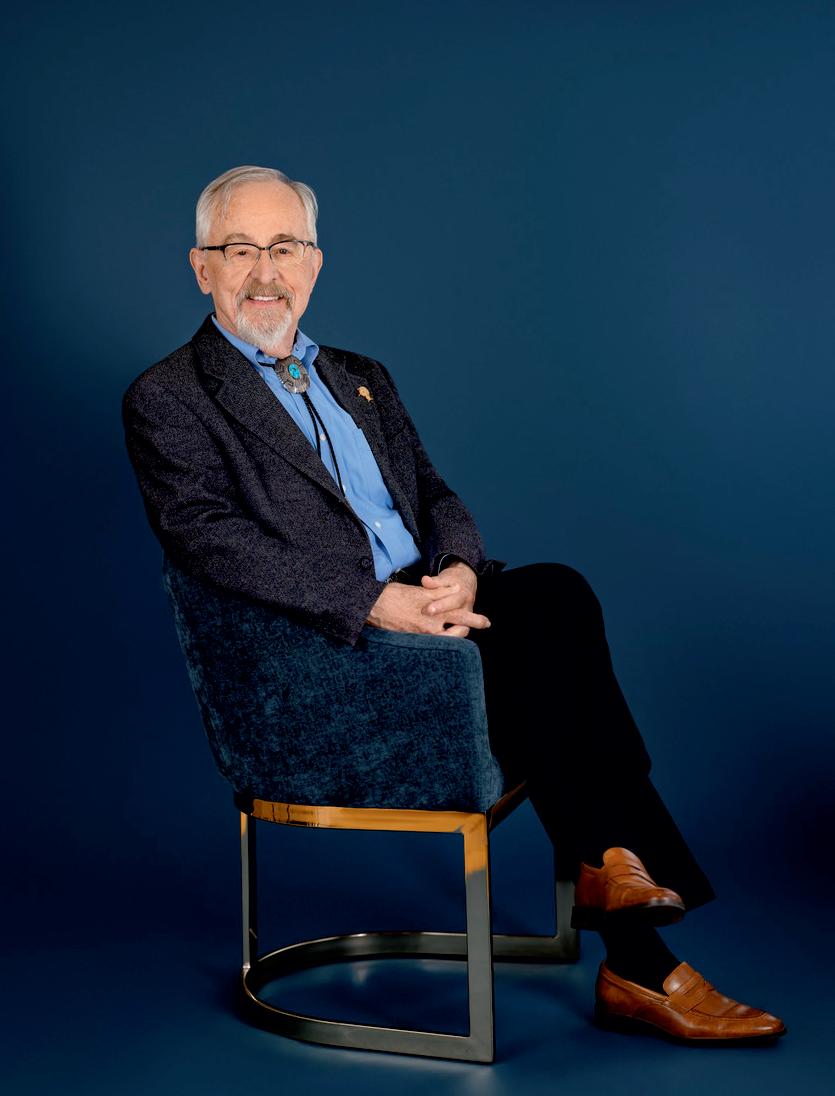

RichardLarson'seducationalphilosophyrevolvesaround developingusefulskills—likecriticalthinking,modelbasedreasoning,andhands-onproblem-solving—thatgive studentsimportant,enduringbenefitsinbothacademicand practicalsettings.
1.EnhancesUnderstandingandRetention
Activeworkingthroughofissues,Larsonthinks,insteadof passiveconsumptionofinformation,resultsinadeeper understandingofconcepts.Bygettingstudentstoemploy basictoolssuchaspencilandpapertoworkoutreal-world situations,hemakesthemmemorizetheprocessand solution.Accordingtohim,"Model thinkers understand and remember solutions better for having thought through the steps and can better apply what they've learned to future problems".
2.EncouragesCriticalandIndependentThought
Larson'smethodteachesstudentstochallengeassumptions, identifybiases,andmodifytheirconclusionsasnewdata arises.This"model thinking"developscriticalthinkerswho are,inhiswords,"energetic detectives are always on the lookout for the facts"and"sensitive to the traps of human intuition".Theseabilitiesareessentialforworkingthrough complicated,uncertainproblemsinbothworkandlife.
3.EquipsStudentstoTackleReal-LifeProblems
Byconnectingmathmodelsandoperationresearchto people'sdailyexperience—likemodelingacommuteor examiningwaitingqueues—LarsonillustratesthatSTEM principlesrelatetoreal-worldproblems.Thatway,learners gainskillstheycanusetosolvereal-lifeproblems,having theireducationrelatedirectlytoproblemsoutsidethe school.
4.FostersLifelongLearningandResilience
Larsonis"for the process, not the answer."Hestressesthat learningisnever-endingandteachingachallengingsubject is"our best way to learn it ourselves, is an unselfish act, and bonds the teacher and learner".Suchaphilosophy breedsaspiritofconstantgrowthandflexibility,andequips studentstocontinuelearningalltheirlives.
5.BuildsConfidenceandProblem-SolvingResilience
Bysolvingmulti-step,hands-onexercises,studentsbecome patient,persistent,andassuredthattheycansolvehard problems.Larsonnotices,"Many of us in the age of instant Google searches have lost the ability — or perhaps the


Larson'sreal-worldmethodology,asembodiedinprograms suchasMITBLOSSOMS,guaranteestop-levelSTEM educationiswithinthereachofallstudentsregardlessof origin.Hedeclares,"A child's educational opportunities shouldn't be limited by where they were born or the wealth of their parents".Throughtheemphasisonuseful,widely applicableskills,heseekstobalancetheeducationplaying field.
RichardLarson'sfocusonpracticalskillsmakesstudents independent,versatile,andself-assuredproblem-solvers. Prioritizingactivelearning,criticalthinking,andpractical application,hismethodologynotonlyincreasesacademic successbutalsoequipsstudentsforalifetimeofsuccessin therapidlychangingworld.
Thelandscapeofeducationisrapidlyevolving,driven
bytheintegrationofadvancedtechnologiesthatare reshapinghowknowledgeisdelivered,accessed,and experienced.Nolongerlimitedtophysicalclassroomsand staticteachingmethods,learningtodaycantakeplace anytime,anywhere,andinwaysthataremoreinteractiveand personalizedthaneverbefore.Asschoolsanduniversities aroundtheworldadapttothesechanges,technologyis emergingnotjustasasupplementarytool,butasacatalyst forabroadertransformationofthelearningenvironment. FromvirtualclassroomsandAI-driveninstructiontoinclusive platformsthataddresseducationalinequities,digital innovationisredefiningthepossibilitiesofteachingand learning.Thisarticlehighlightshowtechnologyisbeingused toreimaginethelearningenvironment,makingitmore flexible,engaging,andresponsivetothediverseneedsof today’slearners.
Technologyhasthepotentialtotransformtraditional classroomsintodynamiclearningenvironmentsthat transcendphysicalboundaries.Inthepast,educationwas largelyconfinedtofourwalls,withstudentsandteachers relyingheavilyontextbooksandblackboards.Today,virtual learningplatforms,videoconferencingtools,and collaborativesoftwarehavereshapedwhataclassroomcan be.Virtualclassroomsandhybridmodelsofferflexibilityfor learnersofallages,enablingaccesstoeducationregardlessof geographicallocation.
InhighereducationandK-12settingsalike,Learning ManagementSystems(LMS)suchasCanvas,Moodle,or GoogleClassroomprovidecentralizedplatformsfor deliveringcontent,trackingstudentprogress,andfostering communication.
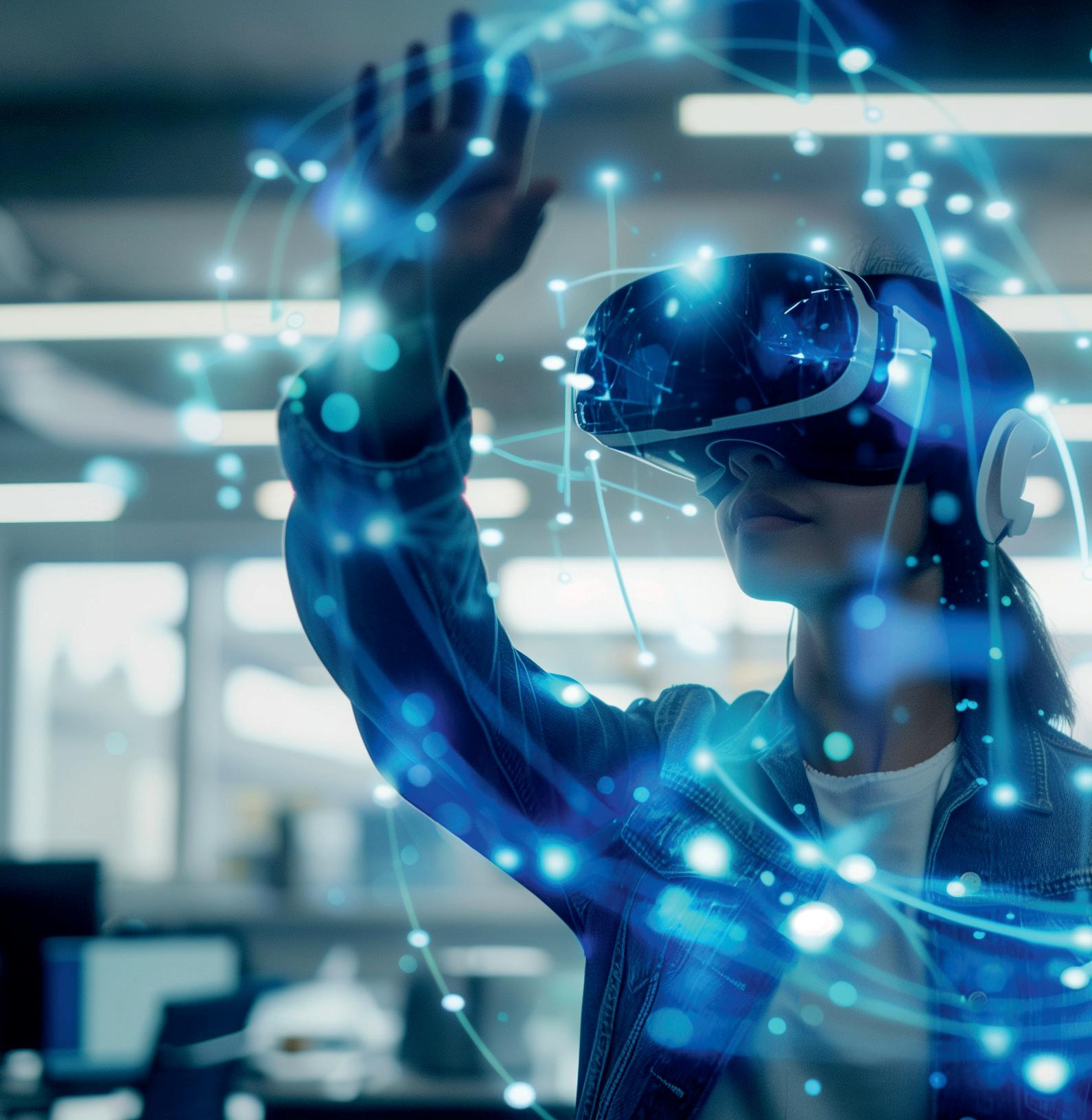
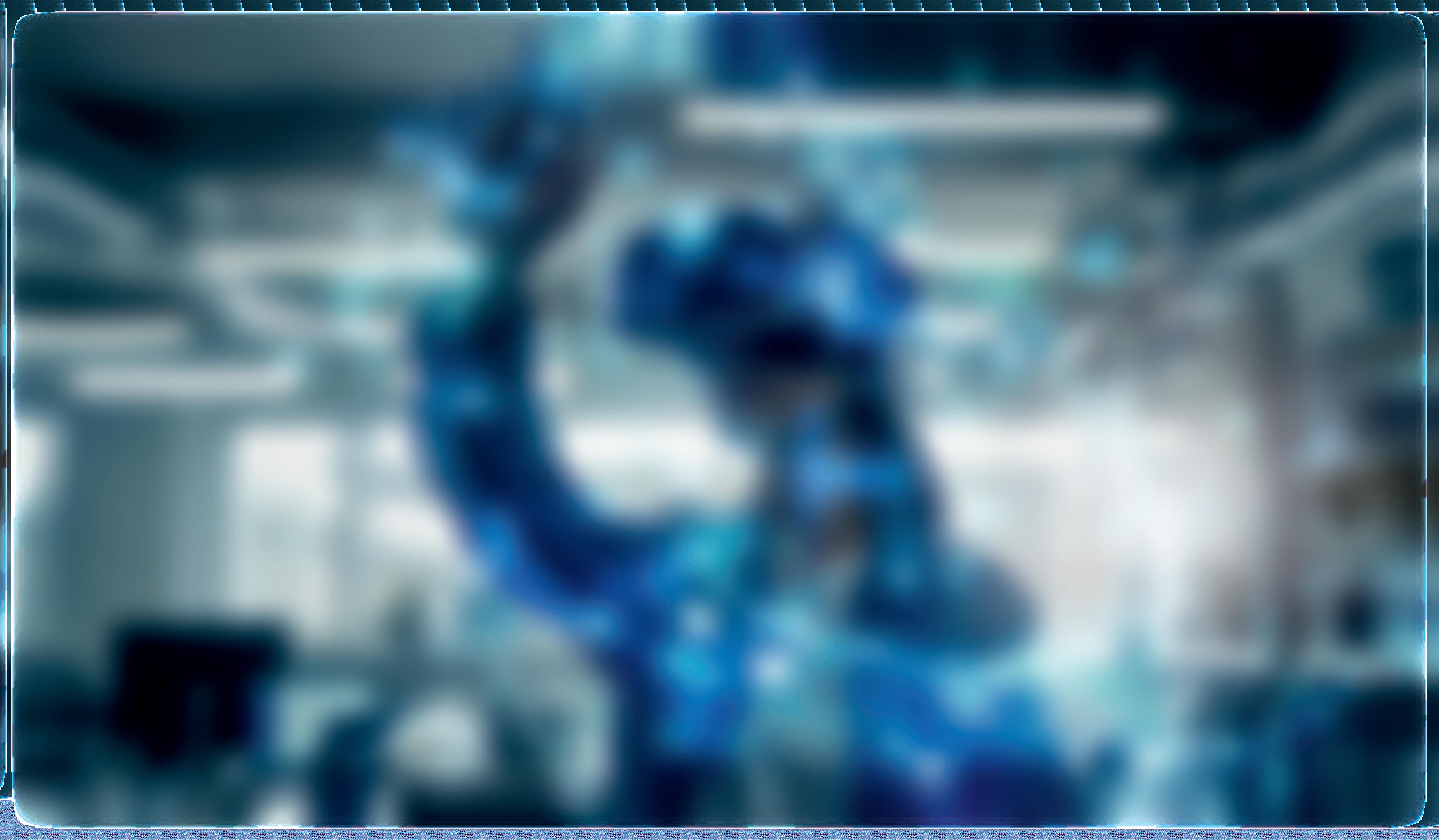


Thesesystemssupportavarietyofmultimediacontent, fromvideolecturestointeractivesimulations,allowing educatorstocatertodifferentlearningstyles.Furthermore, theincorporationofaugmentedandvirtualreality(AR/VR) canbringabstractconceptstolife,makingsubjectslike historyorbiologymoreimmersiveandengaging.
Oneofthemostprofoundcontributionsoftechnologyto educationistheabilitytopersonalizelearning.Artificial intelligence(AI)andmachinelearningalgorithmsanalyze studentperformancedatatoidentifystrengths,weaknesses, andlearningpreferences.Withthisinsight,educatorscan tailorinstructiontomeetindividualstudentneedsmore effectivelythaneverbefore.Adaptivelearningplatforms likeDreamBoxorKnewtonadjustcontentinreal-time basedonastudent’sprogress,providingadditionalsupport orchallengingmaterialsasneeded.
Thisnotonlyfostersmasteryofcontentbutalsoencourages agrowthmindset,wherestudentsaremotivatedbytheir ownprogressratherthanbeingcomparedtopeers.Beyond contentdelivery,AIisalsobeingusedtostreamline administrativetasks,givingeducatorsmoretimetofocus onteaching.Toolslikeintelligentgradingsystems, plagiarismcheckers,andautomatedfeedbackmechanisms improveefficiencywhilemaintainingacademicintegrity
Asthenatureofworkevolves,sotoomusteducation.The shelflifeofskillsisshortening,andthedemandfor continuouslearningisgrowing.Technologyenables lifelonglearningbyprovidingflexible,on-demandaccessto educationalresources.OnlineplatformslikeCoursera,edX, andLinkedInLearningoffercoursesacrossvarious disciplines,oftenwithindustry-recognizedcertifications.
Microlearning,orthedeliveryofcontentinsmall,focused segments,isparticularlyeffectiveforadultlearnersand professionals.Mobileapps,podcasts,andshortvideo tutorialsallowindividualstoupskillduringcommutes, breaks,orevenings,fittingeducationintotheirbusylives.
Gamification,theuseofgamedesignelementsinnon-game contexts,isanothereffectivestrategyformaintaining learnerengagement.Byincorporatingrewards,progress tracking,andinteractivechallenges,educationaltechnology
canmakelearningmoreenjoyableandmotivatingacross agegroups.
Oneofthecriticalchallengesineducationhasbeenthe disparityinaccessandopportunity Technology,when deployedequitably,hasthepotentialtobridgethesegaps. OpenEducationalResources(OER),suchasKhan AcademyorMITOpenCourseWare,providefreeaccessto high-qualityeducationalmaterials.Theseplatforms democratizeeducation,allowingstudentsfromunderresourcedcommunitiestolearnatthesamelevelasthosein well-fundedschools.
Furthermore,assistivetechnologiesplayavitalrolein inclusiveeducation.Toolslikescreenreaders,speech-totextsoftware,andcustomizedlearninginterfacesensure thatstudentswithdisabilitiescanfullyparticipateinthe learningprocess.Byprioritizingaccessibility,educatorscan fosteralearningenvironmentthatrespectsandsupportsall learners.
Educationalinnovationthroughtechnologyisnotmerely aboutadoptingthelatestgadgetsorplatforms;itisabout reshapingtheeducationalexperiencetomeetthedemands ofarapidlychangingworld.Bycreatingmoreflexible, engaging,andpersonalizedlearningenvironments, educatorscanbettersupportstudentgrowthandsuccess.As thistransformationcontinues,thefocusmustremainon equity,access,andthepurposefuluseofdigitaltoolsto enhance,notreplacethehumanelementsofteachingand learning.Breakingnewgroundwithtechnologyin educationisbothachallengeandanopportunity,onethat requiresvision,collaboration,andacommitmentto continuousimprovement.

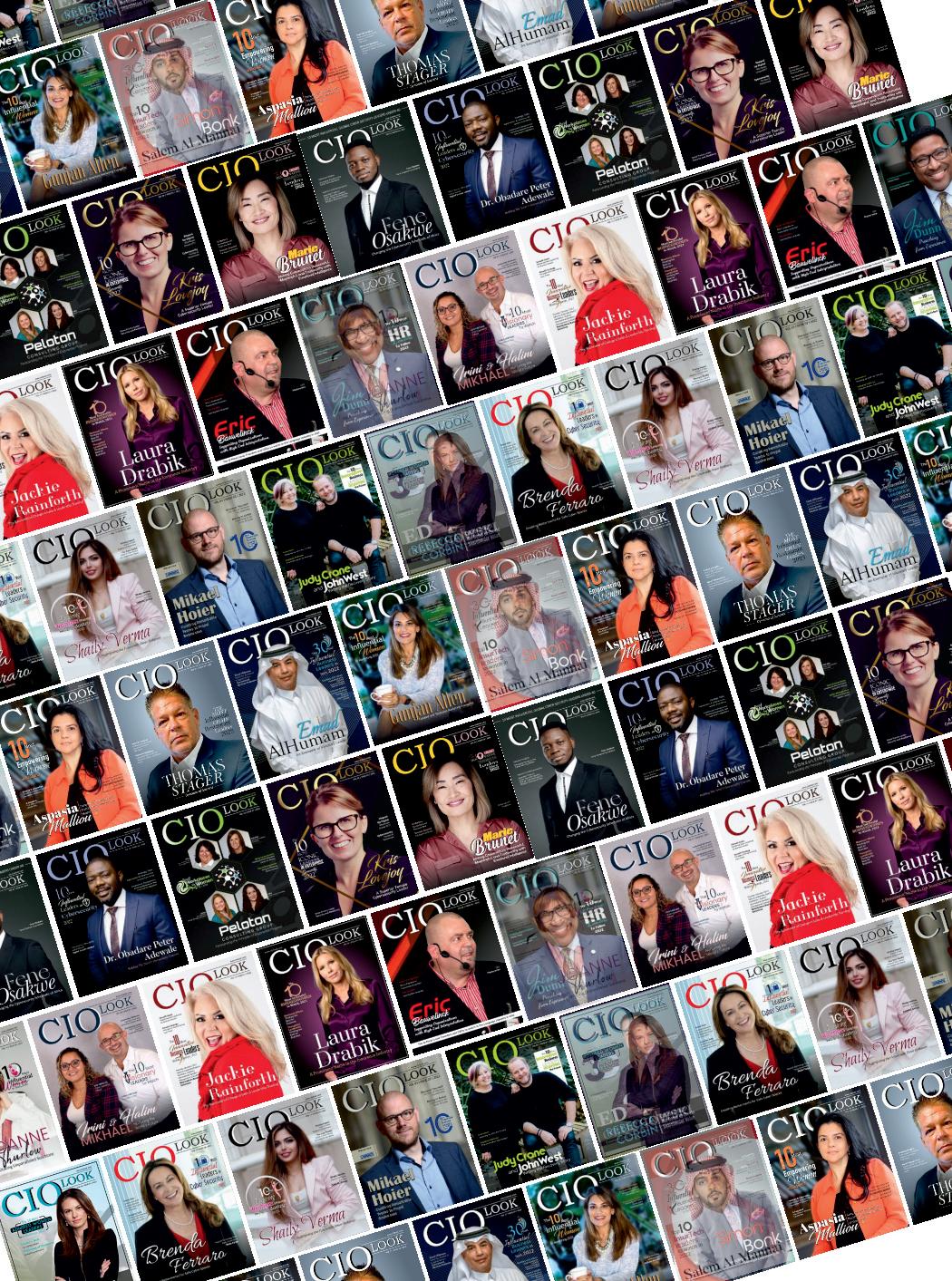
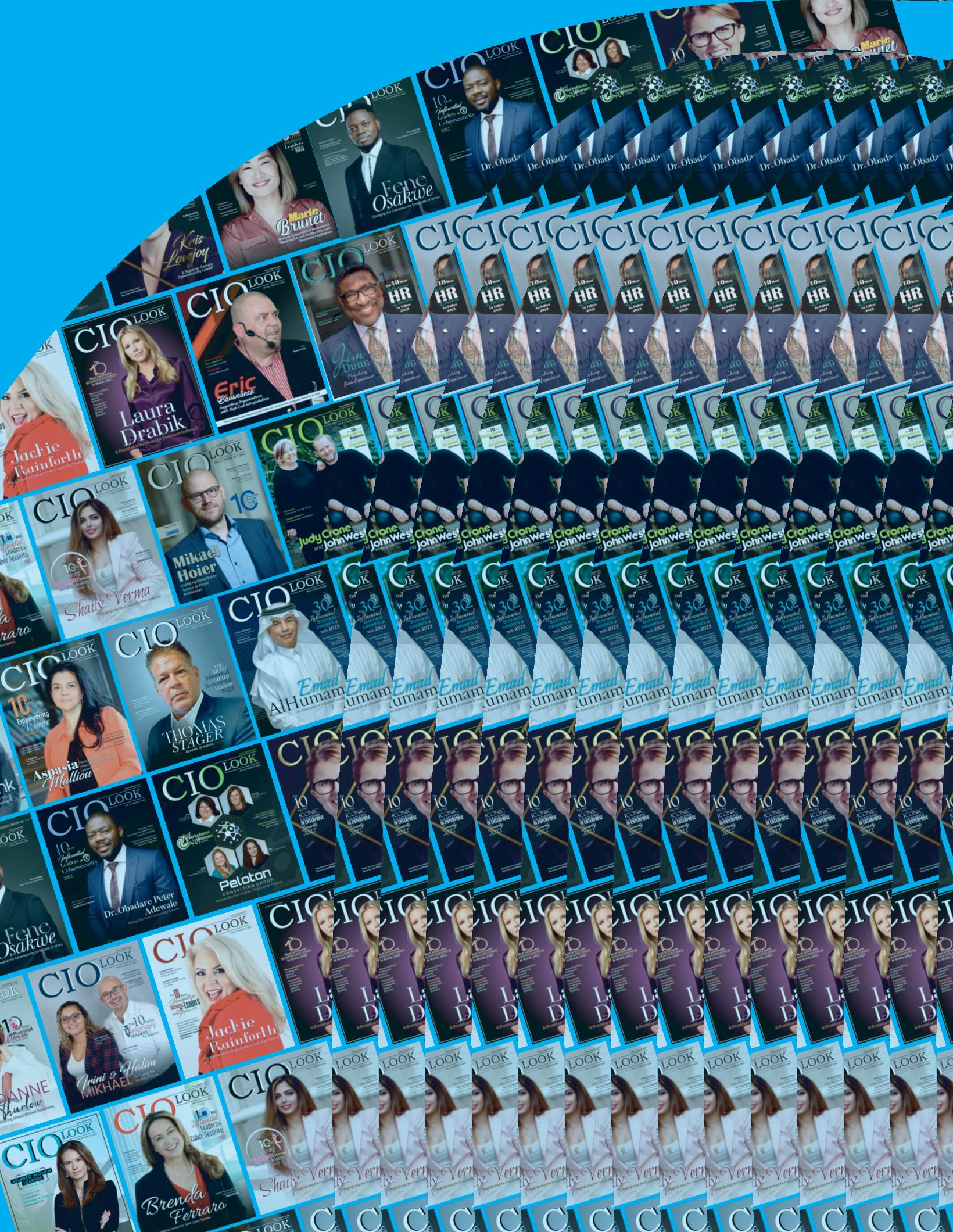




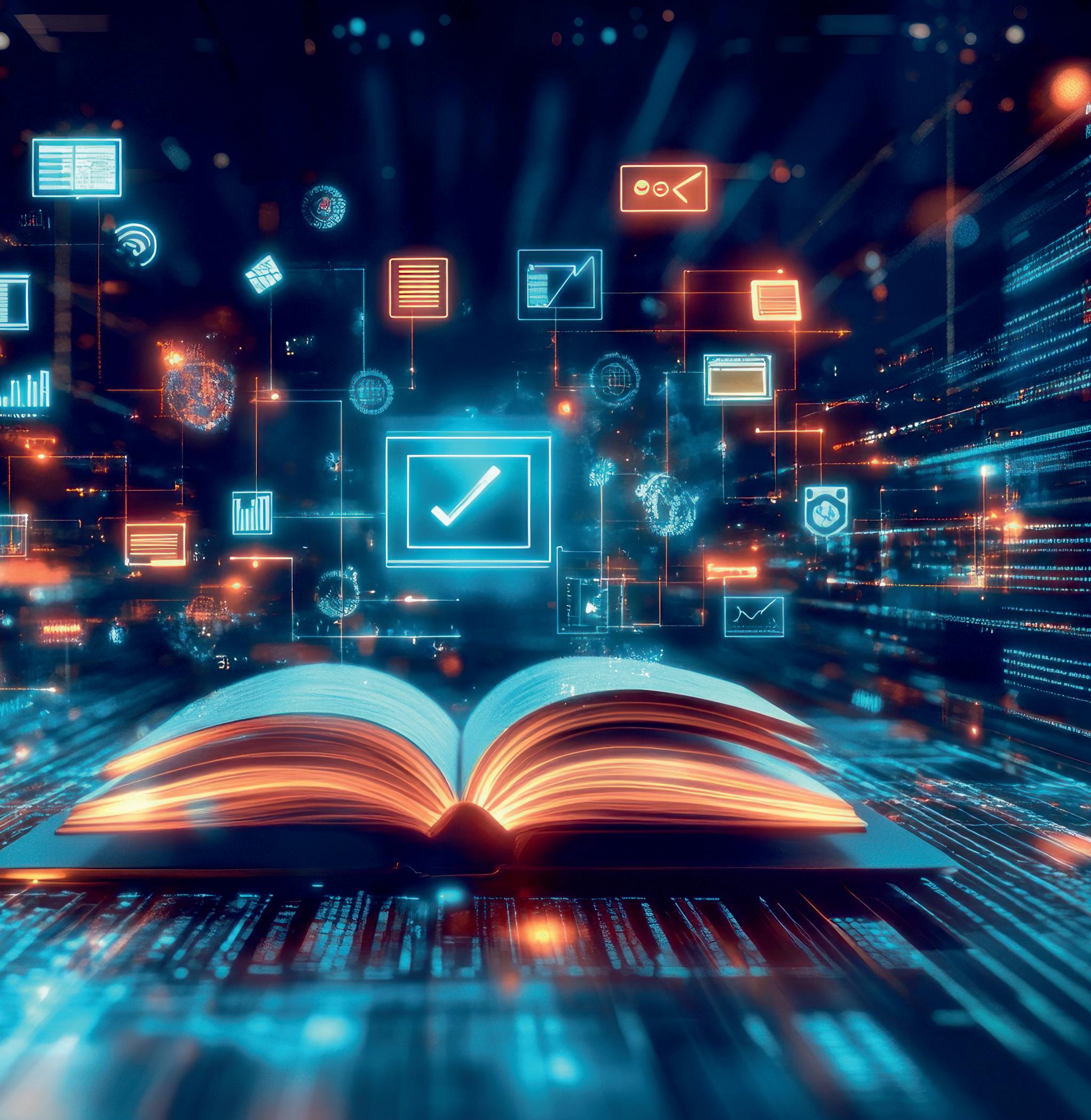


Inthemoderneducationallandscape,digital
transformationisredefininghowinstitutionsapproach teaching,learning,andstudentengagement.As technologycontinuestoadvance,educationalinstitutions mustadoptcomprehensivestrategiesthatgobeyondthe mereuseofdigitaltools.Asuccessfuldigitallearning transformationrequiresthoughtfulintegrationof infrastructure,curriculumredesign,educatorsupport,and data-driveninsights.Theseinterconnectedcomponents formthefoundationforalearningenvironmentthatisnot onlyinnovativeandflexiblebutalsoinclusiveand outcomes-focused.Tonavigatethisshifteffectively, institutionsmustbepreparedtorethinktraditionalmodels andinvestinthecapabilitiesthatdrivelong-term educationalsuccess.
Technologyservesasthefoundationalpillarofdigital learningtransformation,enablinginstitutionstoreimagine andenhancethelearningexperience.Tosupportboth synchronousandasynchronousinstruction,itisessentialto investinscalable,secure,andintuitivedigitalplatforms. CoretechnologiessuchasLearningManagementSystems (LMS),videoconferencingsolutions,digitalcontent developmenttools,andlearninganalyticsplatformsmustbe integratedtoensureaseamlessandeffectivelearning environment.
Beyondthedeploymentofsoftwareandhardware, institutionsmustprioritizerobustinfrastructurethat includeshigh-speedinternetconnectivity,comprehensive cybersecurityprotocols,andresponsivetechnicalsupport. Equitableaccessremainsacriticalcomponentof infrastructureplanning,especiallyforlearnersfrom underservedorremotecommunities.Thismayinvolve distributinglearningdevices,designingmobile-friendly content,andformingstrategicpartnershipswithcommunity organizationstoaddressandovercomethedigitaldivide.
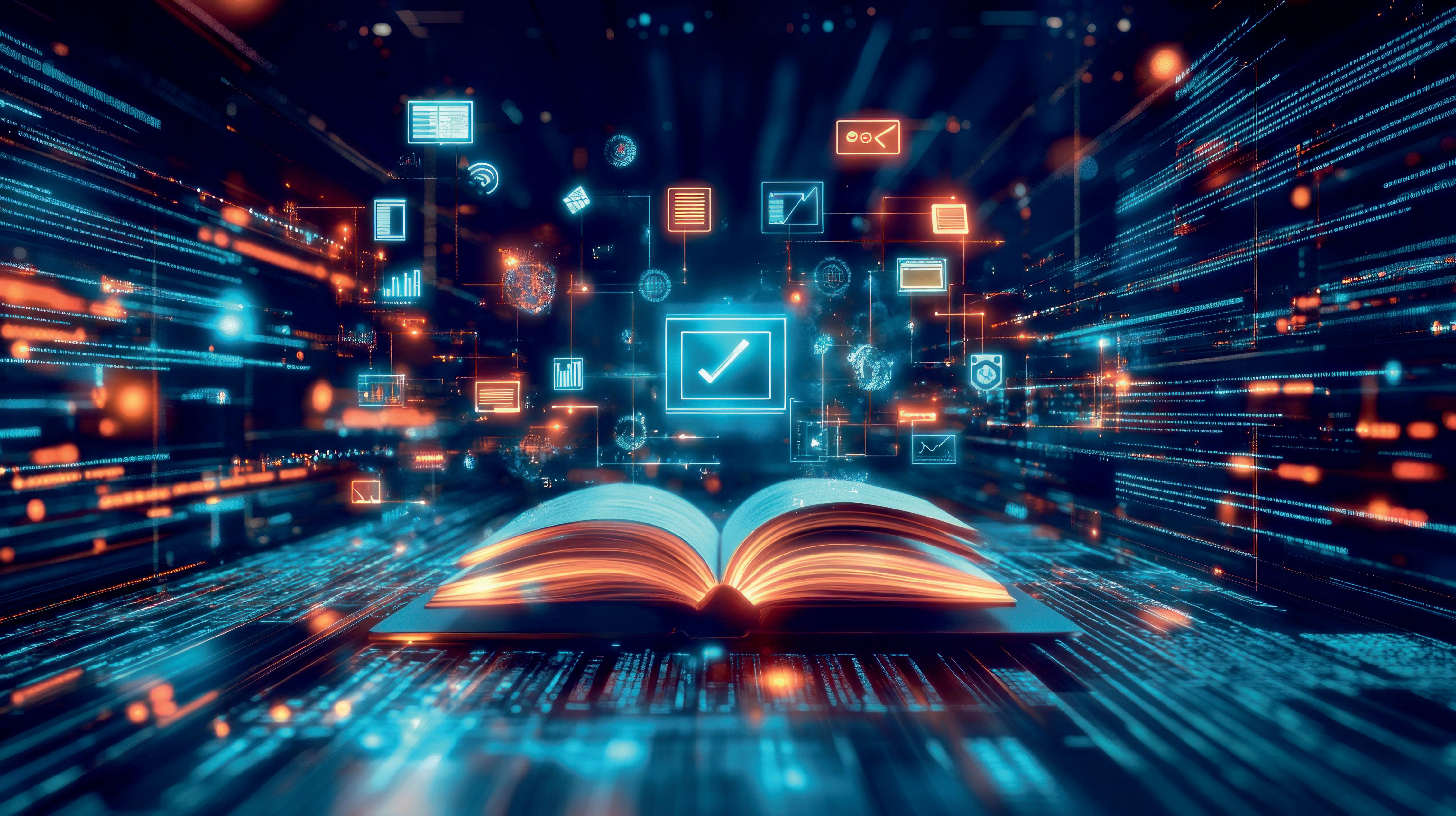
Transformingthedigitallearningexperiencenecessitatesa fundamentalrethinkingofcontentdeliverymethodsand learnerengagementstrategies.Instructionaldesignmustbe thoughtfullyadaptedtoalignwiththeuniquedynamicsof digitalenvironments.Thisinvolvesintegratingmultimedia resources,gamifiedlearningelements,adaptivelearning pathways,andcollaborativetechnologiestocreatemore immersiveandresponsiveeducationalexperiences.
Curriculumdesignshouldemphasizemodularity,enabling greaterflexibilityandtheabilitytopersonalizelearning journeystomeetdiversestudentneeds.Educatorsare requiredtotransitionfromtraditionallecture-centricroles tomorefacilitativepositions,fosteringactive,inquirydrivenlearning.Assessmentapproachesmustalsobe redefined,prioritizingformativeevaluation,project-based learning,andtheuseofdataanalyticstoprovidetimely, personalizedfeedbackthatsupportscontinuouslearner development.
Thesuccessofanydigitaltransformationinitiativeis heavilydependentontheengagementandcapabilitiesof educators.Ongoingprofessionaldevelopmentisessentialto ensurethatteachersandtrainersareequippednotonlyto utilizedigitaltoolseffectivelybutalsotoevolvetheir instructionalapproachesinlinewithemergingdigital methodologies.Continuouslearningfostersconfidenceand adaptability,bothofwhicharecriticalforeducators navigatingdynamictechnologicalenvironments.
Comprehensivetrainingprogramsshouldextendbeyond technicalproficiencytoincludestrategiesforfostering digitalengagement,managingvirtualclassrooms,curating high-qualitydigitalcontent,andleveraginglearning analyticstoenhanceinstructionaldecision-making. Additionally,fosteringacultureofpeercollaboration throughmentorshipopportunitiesandprofessionallearning communitiescanstrengtheneducatorsupportnetworks. Thesecollaborativestructureshelpfacilitateknowledge sharing,easethetransitiontodigitalplatforms,andmitigate resistancetochangebybuildingcollectiveownershipofthe transformationprocess.
Anessentialbenefitofdigitallearningenvironmentsisthe abilitytogatherandanalyzecomprehensivedataonlearner engagement,performance,andbehavioralpatterns.These insightsplayacriticalroleinenhancinginstructional practices,identifyinglearnerswhomayrequireadditional support,andcontinuouslyoptimizingtheoveralldigital learningstrategytoimproveoutcomes.
Tomaximizetheimpactofdata-drivendecision-making, institutionsshoulddefineclearsuccessindicatorsand implementrobustanalyticstoolscapableofdelivering meaningful,actionableinsights.Atthesametime,itis imperativetoupholdstrictstandardsofdataprivacyand ethicaluse.Ensuringtransparencyandresponsiblehandling oflearnerdatafosterstrustamongstakeholdersand supportsthedevelopmentofasecureandequitabledigital learningecosystem.
Thejourneytowarddigitallearningtransformationisboth complexandessential.Institutionsthatinvestintheright technologicalinfrastructure,redesigntheircurriculafor digitaldelivery,empowereducatorsthroughongoing professionaldevelopment,andleveragedataanalyticsfor continuousimprovementarebetterpositionedtocreate engagingandeffectivelearningenvironments.Importantly, thistransformationmustbegroundedinequityandethical responsibility,ensuringthatalllearnershaveaccesstothe toolsandopportunitiestheyneedtosucceed.Asthe educationallandscapecontinuestoevolve,thosewho embraceinnovationwithclarity,commitment,andpurpose willleadthewayinshapingthefutureoflearning.


“Education is the most powerful weapon which you can use to change the world, and technology is the tool to make it possible.”







